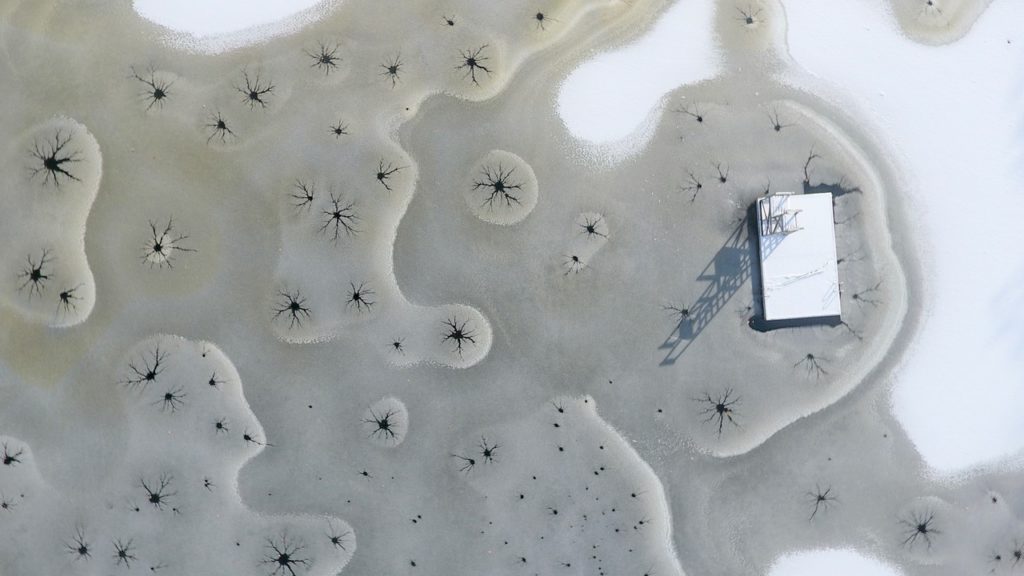Winter on the lakes
When the surface of the lake freezes, what happens to all the activity that was beneath the surface in the summer? As temperatures get colder, the metabolism of animals that are not warm-blooded slows. Everything must adapt to the winter environment. More keeps going on beneath the ice than we might expect.

Clear ice allows enough sunlight to penetrate to drive substantial growth in algae. Some algae even benefit from the stable environment provided by a protective ice cover. Ample algae allows zooplankton, the small critters that consume algae, to prosper. Snow on top of the ice will reduce the amount of light entering the water column, reducing algae growth. Even with snow cover, some aquatic plants persist, although their biological activity slows from cold temperatures. Other plants die back to root crowns or rely on winter buds or seeds to start new spring growth. While some zooplankton form cysts and eggs to survive the winter season, scientists have been surprised to find that many zooplankton species stay active, grow, and reproduce all winter.
Water’s weird winter properties
Water has extraordinary characteristics, such as its maximum density at 39°F or 4°C. We know that in summer, lakes have a less dense warm layer on the top, and then a colder layer where the sun does not penetrate and warm the water. The different temperatures allow stable density layers to form. In spring and fall, waters have the same temperature top to bottom and all the water and nutrients mix in a stage called turnover. In winter, just below the ice, the coldest water at 32°F (0°C) will float on top of the warmer, denser water at the bottom of the lake. That keeps the lake from freezing completely and allows life to persist. (For more on water density, see water and light.)
Fortunately, and in another odd twist of water properties, cold water can hold more oxygen than warmer water. Although ice and snow will reduce light and photosynthetic activity, oxygen will stay dissolved in the water column for our lakes. More northern lakes with longer periods of ice cover may lose oxygen in their deep waters.
Metabolism slows in cold temperatures
Slower metabolism means that animals beneath the ice don’t need as much oxygen. Cold-blooded amphibians and reptiles hibernate in the mud. Frogs have the capability to absorb oxygen through their skin. Turtles, usually air-breathing, also have an area where the blood vessels can absorb oxygen from the water while they remain in a cold stupor.
Cold-water fish like trout flourish in the cold, oxygenated water, although they may not find plentiful prey. Many warm-water fish are affected by cold water temperatures and are sluggish in the winter. The dominant fish in our lakes, like warm-water largemouth bass, reduce their requirements for food and oxygen until the lake water warms in the spring.
Gradually the days lengthen, the air warms, the ice melts, the lake mixes, and life gets ready for spring. The next cycle of the seasons takes over.